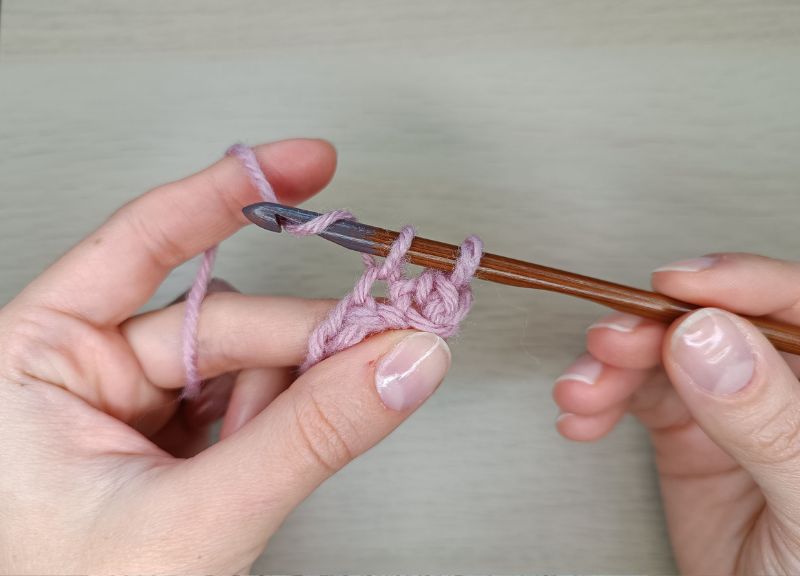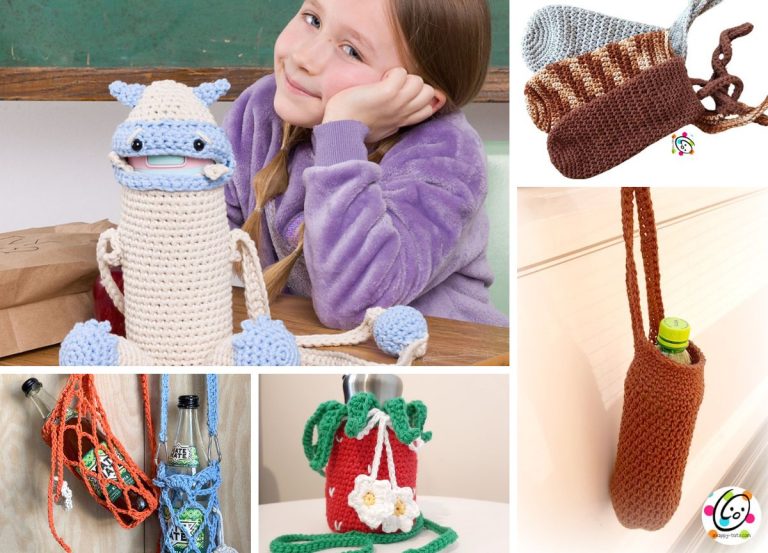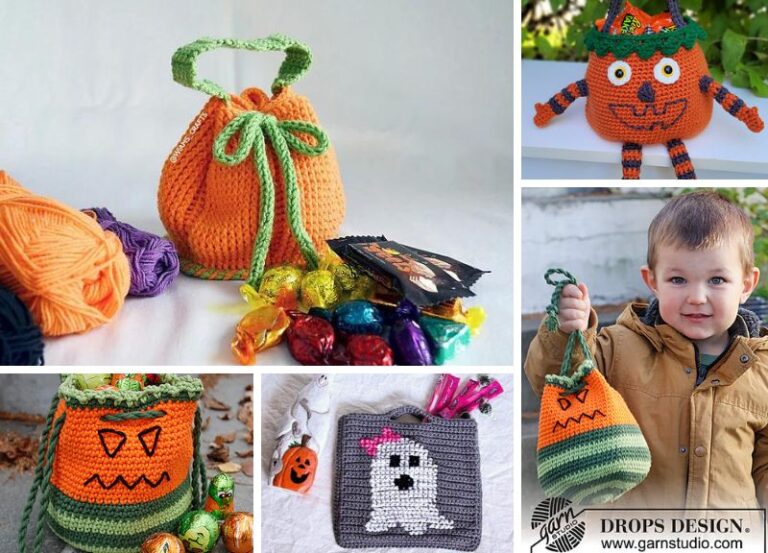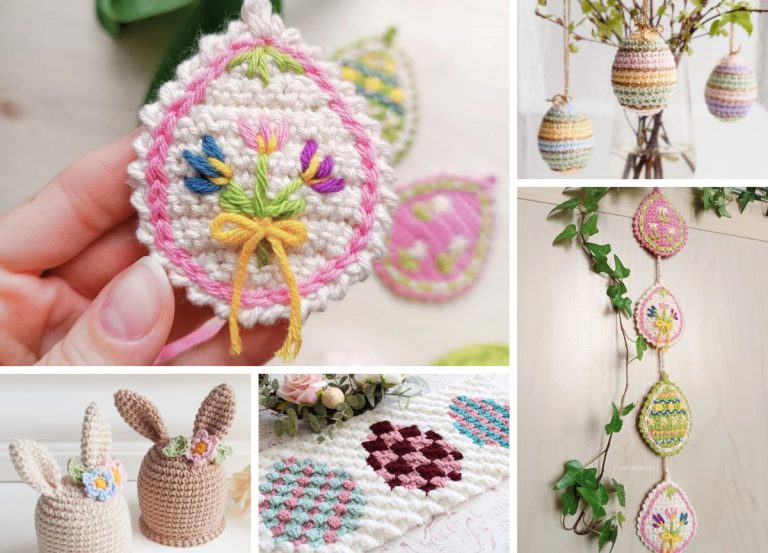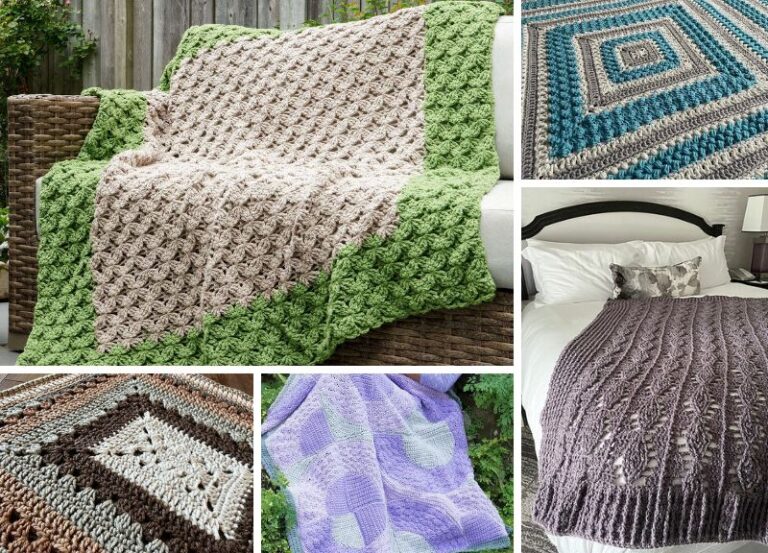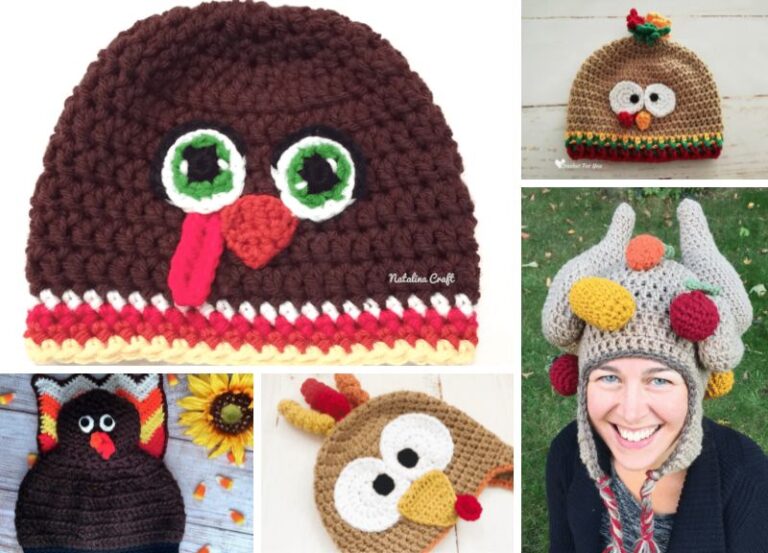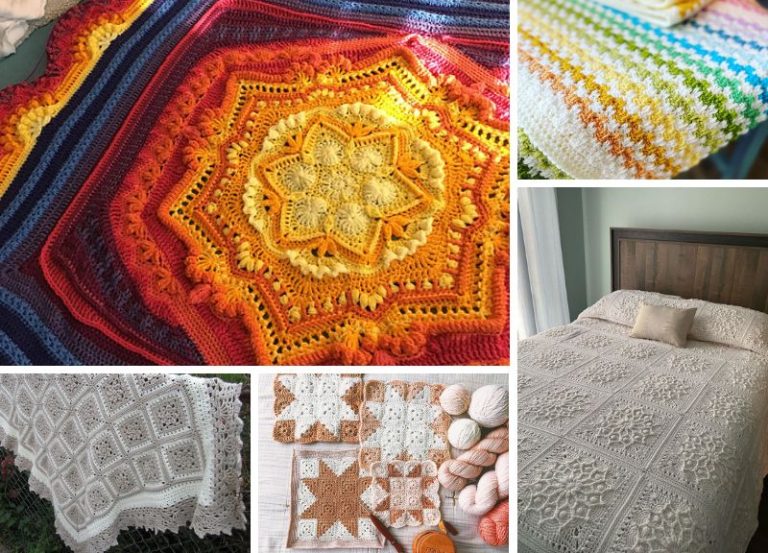Single Crochet Tutorial to Learn Basics on How to Crochet
Welcome to the world of crocheting! If you’re eager to dive into your next crafting project, mastering the single crochet stitch is an essential skill. Whether you’re a beginner looking to learn the basics or an experienced crafter aiming to refine your technique, this guide on how to single crochet will provide you with all the necessary steps and tips.
The single crochet stitch is often the first stitch new crocheters learn when they master how to make a slip knot and chain stitch. It serves as the foundation for countless projects, from cozy scarves to plush blankets. The versatility of the single crochet makes it a staple in any crafter’s repertoire.
In this article, we’ll cover everything from making a foundation single crochet to forming your first row and beyond. Get ready to transform yarn into stunning creations with ease as we delve into the simple yet impactful world of single crochet. Join us as we explore the techniques that will set the basis for your crocheting journey!
What is a Single Crochet?
Single crochet is a fundamental stitch used in various crochet projects. It involves inserting the crochet hook into a stitch, pulling the yarn over the hook, and creating a new stitch. This technique is the building block for more complex crochet patterns and designs.
Why is it important?
Single crochet is crucial because it provides a dense and sturdy fabric ideal for numerous crochet projects, such as hats, scarves, and blankets. Mastering this stitch can significantly enhance a crocheter’s skill set, allowing for more intricate and varied creations.
Basic techniques on how to single crochet
To perform a single crochet, you need to master inserting the hook into the fabric, yarn over, and pulling through the loop. Consistency in these basic motions ensures even stitching and a neat finish.
Differences in US and UK Terms
It’s important to note that crochet terms in the US and the UK differ. What is known as single crochet in the US is termed double crochet in the UK. This distinction is vital for following patterns correctly. Pay attention to the instructions written. Designers usually mention what terms they use.
Here is a crochet stitches abbreviation chart to compare US and UK terms:
| US Terms | UK Terms |
| Chain (ch) | Chain (ch) |
| Slip stitch (sl st) | Slip stitch (sl st) |
| Single crochet (sc) | Double crochet (dc) |
| Half double crochet (hdc) | Half treble crochet (htr) |
| Double crochet (dc) | Treble crochet (tr) |
| Treble crochet (tr) | Double treble crochet (dtr) |
| Double treble crochet (dtr) | Triple treble crochet (ttr) |
| Magic ring (MR) | Magic ring (MR) |
| Increase (inc) | Increase (inc) |
| Decrease (dec) | Decrease (dec) |
| Front loop only (flo) | Front loop only (flo) |
| Back loop only (blo) | Back loop only (blo) |
| Front post (fp) | Front post (fp) |
| Back post (bp) | Back post (bp) |
| Yarn over (yo) | Yarn over (yo) |
| Turning chain (tch or ch-1 sp) | Turning chain (tch or ch-1 sp) |
Materials and Tools Needed
Crochet Hook
The choice of crochet hook can vary depending on the yarn weight. However, a medium-sized hook (e.g., 5 mm or No 6 for the UK or H-8 for the US) is typically a good start for beginners. I prepared a crochet hook conversion chart in US, UK, and metric systems for your convenience.
| Metric Size (mm) | US Size | UK Size |
| 2.0 mm | B-1 | 14 |
| 2.25 mm | B-1 | 13 |
| 2.5 mm | C-2 | – |
| 2.75 mm | C-2 | 12 |
| 3.0 mm | – | 11 |
| 3.25 mm | D-3 | 10 |
| 3.5 mm | E-4 | 9 |
| 3.75 mm | F-5 | – |
| 4.0 mm | G-6 | 8 |
| 4.5 mm | 7 | 7 |
| 5.0 mm | H-8 | 6 |
| 5.5 mm | I-9 | 5 |
| 6.0 mm | J-10 | 4 |
| 6.5 mm | K-10.5 | 3 |
| 7.0 mm | – | 2 |
| 7.5 mm | – | 1 |
| 8.0 mm | L-11 | 0 |
| 9.0 mm | M/N-13 | 00 |
| 10.0 mm | N/P-15 | 000 |
| 12.0 mm | O | – |
| 15.0 mm | P | – |
| 20.0 mm | Q | – |
Yarn
Yarn selection depends on the project. For beginners, a smooth, light-colored yarn may make it easier to see and count stitches.
Scissors
A good pair of scissors is essential for cutting yarn when switching colors or finishing a project.
Step-by-Step Instructions on How to Single Crochet
So, here it is. Let’s start with the written instructions on how to do a single crochet and then watch the video tutorial to reinforce the knowledge.
Creating a slip knot
Begin by making a loop with your yarn, then pull a new loop through it. Tighten gently around the hook to create your starting slip knot. If you’re a visual crocheter, check out an easy video tutorial on how to make a slip knot crochet.
Making a foundation chain
Yarn over and pull through the loop on the hook repeatedly to create a series of chains, which form the foundation of your project.
If you’re new to chain stitching, check out the comprehensive guide with a video tutorial on how to crochet chain stitch I prepared for you earlier.
Working the first row
Insert the hook into the second chain from the hook, yarn over, and pull through. Yarn over again and pull through both loops on the hook to complete your first single crochet stitch.
Turning your work
Once you reach the end of a row, turn your work to start the next row. This involves rotating the fabric so the unworked side faces you.
Don’t confuse this step with reverse single crochet. It’s different. The reverse single crochet is the same stitch done backward.
Continuing with subsequent rows
Repeat the process of inserting the hook, yarn over, and pulling through to build additional rows. Maintain consistent tension and stitch count throughout.
Video tutorial on how to single crochet
If you’re a visual crocheter, a video tutorial on how to crochet a single crochet may be helpful for you. Watch it!
Common Mistakes to Avoid
Tight tension
One of the most frequent issues crocheters encounter is maintaining the yarn tension too tight. This can make it difficult to insert the hook into stitches and can result in a fabric that’s too stiff, which may not drape well. To avoid this, practice holding the yarn and hook comfortably, allowing the yarn to flow freely through your fingers. Adjust your grip if you find the stitches are hard to work into.
Skipping stitches
Skipping stitches can disrupt the pattern and alter the shape of your project. This often happens at the beginning or end of rows when the turning chain is mistaken as a stitch. To prevent this, count your stitches regularly, especially in the initial rows, to ensure you’re not adding or losing any. Consistent stitch counts are crucial for symmetrical work.
Losing track of your stitches
It’s easy to lose track of where you are in a pattern, particularly in complex projects or when you’re just starting out. Using stitch markers can be a great help. Place them at the beginning of a row or in specific stitches that mark pattern repeats or shape changes. This will help you keep track without having to recount stitches constantly.
Tips and Tricks
Use stitch markers
Stitch markers are invaluable for managing your crochet work effectively. They can be used to mark the beginning of a round, specific places where increases or decreases are needed, or even to hold a stitch in place when you set your work down. For beginners, using a contrasting color of yarn as a makeshift stitch marker can be a simple and cost-effective method.
Add variety with different yarns
Using different types and textures of yarn can dramatically change the look and feel of your projects. For example, wool yarns are great for warmth and have good elasticity, making them ideal for winter garments. Cotton yarns, on the other hand, are softer and breathable, perfect for summer wear or household items like washcloths. Experimenting with variegated yarns or different fiber blends can also add visual interest and texture to your crochet pieces.
Incorporate single crochet into different patterns
Single crochet is extremely versatile, and you can incorporate it into a multitude of patterns. You can create textured patterns like the seed stitch or the lemon peel stitch by alternating single crochet with other stitches, such as double crochet or half double crochet. You can also work single crochet in the round to create amigurumi toys, hats, and other cylindrical items. Learning to increase and decrease with a single crochet will also enable you to shape garments and other tailored pieces.
These detailed tips and tricks, alongside awareness of common mistakes, can significantly enhance your crocheting experience, leading to more successful and satisfying projects. I hope this guide on how to single crochet was useful for you!
FAQ
What are the basic steps to follow when learning to crochet?
To start crocheting, the basic steps include learning how to hold the crochet hook and yarn, making a slip knot, creating a foundation chain, and then performing basic crochet stitches like the single crochet. Practice these fundamentals to build a solid foundation in crochet skills.
How do I create a slip knot to begin crocheting?
To create a slip knot, make a loop with your yarn, then pull another loop through this first one. Tighten the knot on your hook to begin your foundation chain. This slip knot is the first step in starting most crochet projects. I also created a step-by-step guide, including a video tutorial on how to make a slip knot crochet. Check it out!
What is the difference between single crochet and double crochet?
Single crochet involves inserting the hook into a stitch, yarning over, pulling through, then yarning over again, and pulling through both loops on the hook. Double crochet involves yarning over before inserting the hook, pulling yarn through, yarning over again, pulling through two loops, then yarning over and pulling through the remaining two loops.
How can I adjust the tension of my single crochet stitches?
Adjusting tension in crochet is crucial for even stitches. Hold the yarn in such a way that it flows freely but with control, and practice maintaining a consistent grip. This will help keep your stitches uniform and your fabric even.
What are some common mistakes beginners make when single crocheting?
Common beginner mistakes include crocheting too tightly or loosely, missing stitches, or adding extra stitches at the ends of rows. Regularly counting stitches and maintaining consistent tension can help avoid these issues.
Read the more detailed answer in the “Common Mistakes to Avoid” section.
How do I increase or decrease the number of stitches in a single crochet row?
To increase stitches, make two single crochet stitches in the same stitch. To decrease, pull up a loop in each of the next two stitches and then yarn over and pull through all three loops on the hook.
What types of projects are best suited for single crochet stitches?
Single crochet is great for projects that require dense fabric, such as potholders, bags, and some types of amigurumi. It’s also used in crochet hats, scarves, and blankets for a sturdy, close-knit texture.
Can single crochet stitches be used to create intricate designs and patterns?
Yes, single crochet can be used in various ways to create intricate designs, including color changes, textured patterns, and combining with other types of stitches. Techniques like tapestry crochet are particularly well-suited to detailed designs using single crochet.
What are some tips for creating a consistent gauge while single crocheting?
To maintain a consistent gauge, ensure that your tension is even throughout your work. Use a gauge swatch to measure your stitch and row size before starting significant projects, adjusting your hook size if necessary.
How do I create a border or edging using single crochet stitches?
To add a simple border or edging with single crochet stitches, evenly work single crochet stitches around the perimeter of your project, placing one to three stitches in each corner depending on the desired tightness of the turn.
What are some common variations of the single crochet stitch?
Variations include the extended single crochet, which adds extra height, and the slip stitch crochet, which is used for joining pieces or creating firmer fabric. Each variation modifies the basic single crochet to achieve different textures and fabric properties.
How do I read a crochet pattern that includes single crochet stitches?
Reading a crochet pattern involves understanding abbreviations and symbols specific to crocheting. For single crochet, the abbreviation is usually “sc” in US terms or “dc” (double crochet) in UK terms. It’s easy to confuse them, so pay attention to the terms a designer uses. Click here to jump on top and check out the crochet stitches abbreviation chart for US and UK terms.
To create the design, follow the pattern’s instructions for stitch counts and row repeats.
Can single crochet stitches be used to create clothing items or accessories?
Absolutely! You can use single crochet stitches to create various clothing items and accessories, such as sweaters, mittens, caps, and even shoes. The stitch provides a durable and flexible fabric ideal for everyday wear.
How do I fix mistakes in my single crochet work?
To fix mistakes in single crochet, you may need to ‘frog’ (unravel) your work back to before the error occurred. Carefully remove stitches one at a time until you reach the point where you can correctly resume crocheting.
What are some alternative methods for holding crochet hooks while single crocheting?
You can hold crochet hooks in a pencil grip or a knife grip, depending on what’s more comfortable for the crocheter. Experimenting with grip and yarn tension can help find the most effective method for you.
Is there any difference between foundation single crochet and single crochet stitch?
Yes, foundation single crochet (FSC) combines the creation of the foundation chain and the first row of single crochets into one step. This technique provides a more flexible base for the project, ideal for items where a firmer starting chain might be too restrictive.
